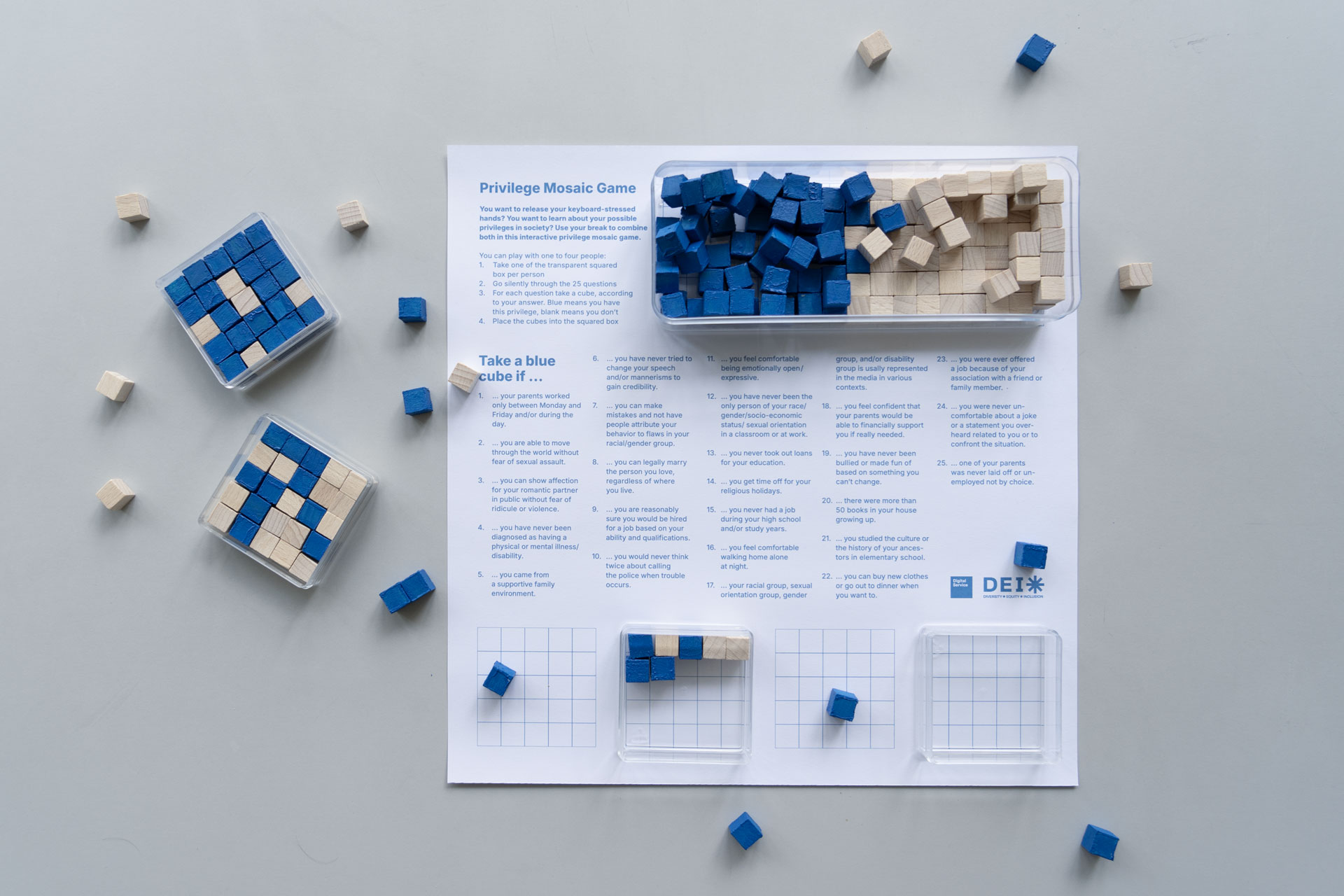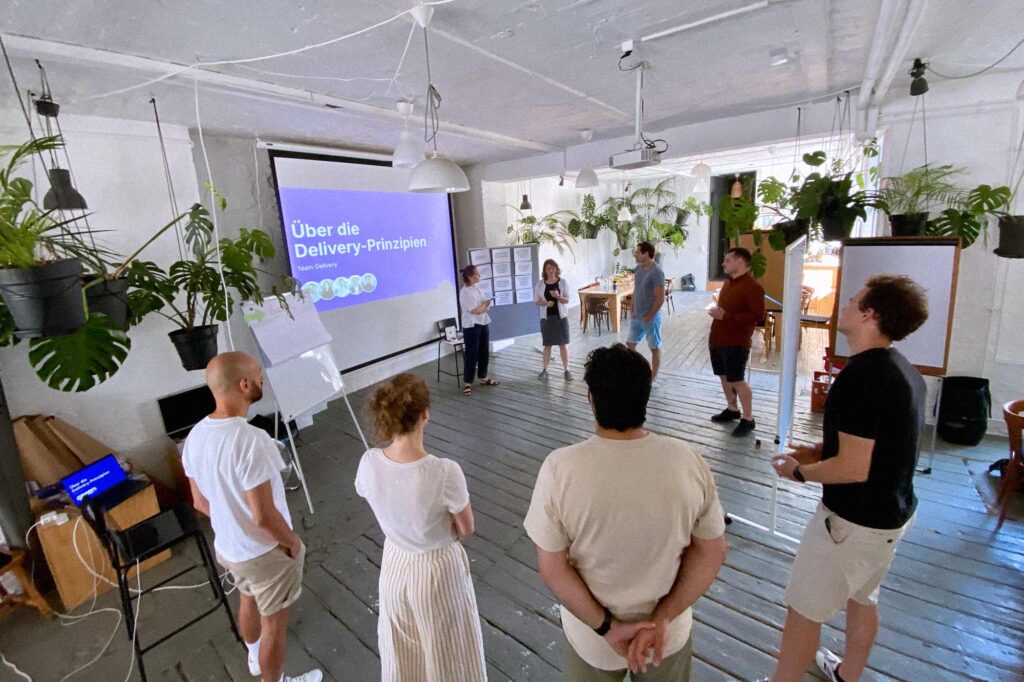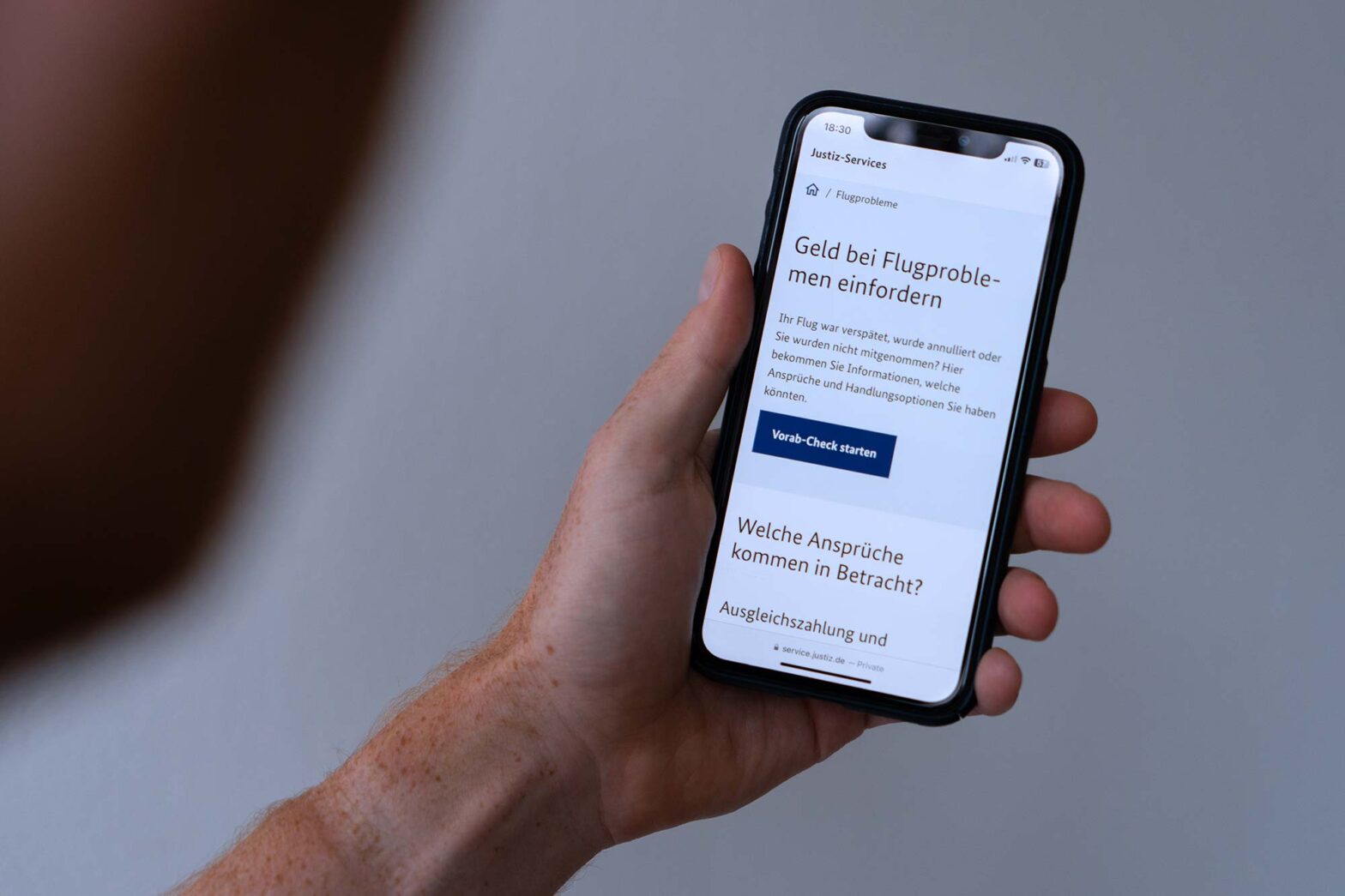What’s more thrilling, meaningful, and intimidating than launching a new service? Launching two new services! Doubling the emotions—that’s what our teams at Digital Service did in the past few days.
Launching new services
While the two services couldn’t be more different in purpose, function, and audience, they still share much. They were developed by multidisciplinary teams doing proper discovery work to understand who the service users are and their circumstances and needs. They follow the same foundational work principles, meet the Service Standard, and share styles and components. Users tested them and provided feedback before they launched. For people outside of Germany, that’s no news. But in the German public sector, it, sadly, remains a rarity.
One service is for civil servants writing laws, while the other is for citizens who had a bad flight experience and want to claim money back. They are for different ministries and couldn’t be more different in direction, but they still appear similar. And while German government is too often doing an appalling job at naming services – lots of animal name acronyms – and is eager to use random domains, these services are doing it right. ‘Geld bei Flugproblemen einfordern’ (‘Claim money for flight problems’) and ‘Digitaltaugliche Regelungen erarbeiten’ (‘Develop digital-ready policies‘) are good services because they use verbs. Straightforward, user-centred content was a major objective – and a Service Standard point to meet. So, the services speak their users’ language and have human-readable, trustworthy government URLs.
Little surprise: None of the services is complete or finished. But they are out there, in public beta. Now, the teams can collect data to improve and develop them further. Both services will continue to evolve and grow in scope, informed by their users’ behaviours and feedback.
I’m massively proud of the two teams and their team members. Over the past months, they have put significant work into researching, designing, and developing these services. At times, the work was hard, progress felt small, and time flew by. But everyone brought their fullest self, and we learnt plenty on the way. I had the privilege to support both teams in a sparring role. Launching their services is the biggest, well-deserved reward for the teams. Now, they can take things from here.
The justice service completed its peer review against the Service Standard some weeks ago. I need to finish editing the report and get it published. The service for policymakers was meant to receive its peer review in July, but the service team decided to postpone. Now, they have expressed interest in participating in a peer review against a draft version of an updated Service Standard. I am open to that idea.
Discussing privilege and principles
Our DEI working group invited us to a ‘Check your privileges’ session over lunch on Wednesday. Facilitated by talent acquisition lead Eva, it was an hour to explore and discuss our privileges as a workforce and individuals. The session started with a ‘privilege walk’ in an open space, followed by an input session that included a wheel of privilege and power and an exchange that filled up the lunch hour.

Johanna and Robin prepared an educational ‘privilege mosaic game’ the day before. It invites two or more people to review and reflect on their personal circumstances.
I continue to be amazed at what our different working groups are doing in their 20% working time. All the activities show our organisational values in action.

On Thursday, I attended the product managers’ offsite, covering for the Head of Product Management, Clara, to deliver a short introduction to the Delivery principles we presented in May. About a dozen product managers got together to review and discuss them, with the goal of creating an improved version. My 10-minute input turned into a 25-minute discussion, and I stayed for another 90 minutes to follow their breakout playback.
I am curious to see their comments, conclusions and recommendations. We plan to use the principles to structure the delivery profession offsite in mid-October.
Taking further steps with accessibility
On Thursday morning, user researcher Joshua and designer Marion discussed our improved pizza-powered accessibility check and ran a demo of the accessibility persona simulator. Hopefully, everyone in the organisation is now aware of the Chrome extension. Ahead of the presentation, Joshua changed the name of the tool to ‘Simulating accessibility personas’ and swapped the icon for one I made using Stephen McCarthy’s persona illustrations.
In the afternoon, the three of us sketched a mini roadmap for the tool. Features include adding German-language support, adding a missing dark mode for one of the personas, and improving better cross-platform hints on activating a screen reader on one’s computer.
We also need to test more specifically on Windows and Microsoft Edge browsers. Furthermore, we discussed whether there is value in exploring a Safari version of the extension. That would be extra work for Joshua. Safari has a 10% market share on desktop computers, which positively surprised me a little, not having looked at browser stats in various years.
The next step is getting the extension into the Chrome Web Store. Then, people will not have to go to GitHub to download it and activate the developer mode in their browser to run it. We also plan to summarise and publish guidance on using the personas in testing.
On Friday, we shared what we have done so far with Anika from GDS. Instead of 40 minutes, we talked for almost 90. There was so much to cover and discuss.
Even 5 years later, we keep revisiting her blog post ‘Using persona profiles to test accessibility’. We have been building on her work, so we were grateful for the time she spared. Anika gave us an update on what happened in the past couple of years and told us how her work has shifted. Diving deeper, she explained why the content of the accessibility persona page on GitHub differs from the GOV.UK documentation of the personas. I suddenly remembered how we tried to stitch together accessibility guidance around 2021 when working on the GOV.UK Service Manual and miserably failed at the task.
She encouraged us to engage with more UK public sector folks. There has been some further interest in the international community. I am interested in international experts’ feedback on our work.
Earlier in the week, Marion and I also talked to accessibility specialists at the Federal Office of Administration, the central service agency of the Federal Government. They are part of a bigger workstream around service consolidation. In their context, service refers to infrastructure, tools and things, not public-facing online services. They are running a portal on accessibility. Among other things, they help create templates for procurement, which I am particularly interested in. We were interested in each others’ work and want to meet again shortly.
Welcoming more team members
On Thursday, we welcomed another new starter, Christian. He is joining us as a designer on the new justice information system. He worked on some services for the State of Berlin before. Interestingly, he has been working on various appointment scheduling tools. That might become handy in the context of justice services sometime in the future.
After opening content design roles a few weeks ago, we re-opened user research roles this week. Somewhat unsurprisingly, there were more user research applications in two days than we had for content design in two weeks.
Tell your colleagues and friends! At @digitalservice.bund.de, we are looking for #ContentDesign ers and #UserResearch ers to work on justice and parental allowance services – who speak both 🇬🇧 English and 🇩🇪 German at C1 level. Ping me if you have questions! 👉 digitalservice.bund.de/karriere
— Martin Jordan (@martinjordan.com) Jul 30, 2024 at 12:30
[image or embed]
I started interviewing the first two content design candidates, and we will continue interviewing in the coming days.
In the meantime, I am grateful for the support of our legal designer, Franziska, on the justice service we just launched and continue to iterate.
Preparing the next community events
On Tuesday night, with a proper delay, I published the website update for the Helsinki Conference 2024. It now includes a whole section with information for participants, including travel and accommodation tips and weather and climate tips.
We updated the Intl #GovDesign Helsinki 2024 🇫🇮 Conference website. It now includes an updated programme and information for participants, including how to travel and where to stay. Further updates follow in the coming days: international.gov-design.com/helsinki2024/
— Martin Jordan (@martinjordan.com) Jul 31, 2024 at 8:58
[image or embed]
In the working group, we discussed other additions to the website, like a list of participating organisations, and posters for the spaces. I shared Stephen’s original poster designs for the 2018 event in London. It will be a pleasure to build on these.
I’m also planning various other community events for the next few weeks. We are looking at these activities within less than a month:
- Berlin Öffentliches Gestalten meetup on ‘Designing better policies’ on either 20 or 22 August
- International call on ‘Designing justice services’ on 22 August
- NExT user-centred design gathering on ‘Good form design’ on 3 September
I have no idea why I keep doing these things in synchronised waves. It would be calmer if I did not do everything too close together, but maybe it’s intuitively easier this way. I can’t tell.
I also started drafting a blog post with updates on International Design in Government community. We should finish it and publish it in the coming week or so.
What’s next
The Digital Council of the State of Sachsen-Anhalt is meeting on Thursday, 8 August, so I’ll be travelling to Magdeburg for that.
This week’s service design exchange with our project partners at the Federal Ministry for Family Affairs, Senior Citizens, Women, and Youth had to be postponed. It now happens on Wednesday. I will adjust the narrative in preparation as there is more to say.
Otherwise, I need to block time for writing. It’s August already, and I have an ambitious list of things to publish.

